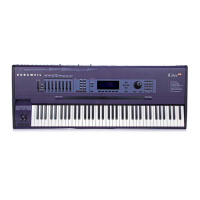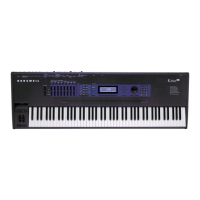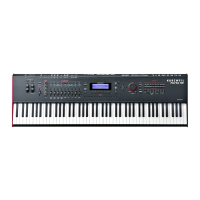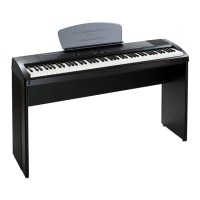17-16
FUNS
The FUN Equations
Sample b On a
This is a sample and hold function. The values of Inputs a and b are interpreted as logical
quantities, as described for the equations a AND b, a OR b. When the value of Input a changes
from FALSE to TRUE (goes above +.5), the value of Input b at that moment is sampled
(recorded), and becomes the FUNÕs output value. This value remains constant until Input a
makes another transition from FALSE to TRUE.
Sample b On ~a
This works like the previous equation, but the value of Input b is sampled whenever the value of
Input a makes a transition from TRUE to FALSE.
Track b While a
This equation also interprets the values of Inputs a and b as logical quantities. While the value of
Input a is TRUE, the value of Input b is used as the FUNÕs output value. The output value
changes exactly as the value of Input b changes. When the value of Input a goes FALSE, the
FUNÕs output value freezes and remains constant until the value of Input a becomes TRUE
again. The FUNÕs output value then continues to track the value of Input b.
Track b While ~a
This is the opposite of the previous equation. The FUNÕs output value tracks the value of Input b
as long as the value of Input a is FALSE.
Diode Equation FUNs
The remaining equations perform a diode-like function; only positive input values are
signiÞcant. If the result of the equation is negative, the FUNÕs output value is 0. You can use
these equations to limit bipolar control signals to unipolar values. Normally youÕll use these by
setting Input a or b to ON or OFF, and assigning some control source to the other input. These
will enable you to produce a variety of output curves.

